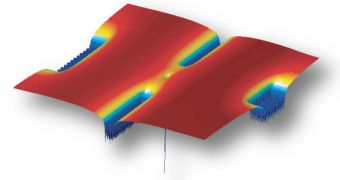A group of experts in Australia and the United States have built the world's smallest possible transistor. The device is basically a single-atom. The achievement proves that Moore's Law of miniaturization can be bypassed.
The transistor is made up of a single phosphorous atom, and was developed by experts at the University of Melbourne, the University of New South Wales and the Purdue University. The team says there is no way to build a smaller transistor for the foreseeable future, maybe ever.
For years, scientists have been working towards miniaturizing existing transistor designs. They succeeded in creating devices only a few nanometers in size, but they were always subjected to a limitation called Moore's Law.
The prediction held that the number of transistors in a chip would double in performance, and halve in size, every 2 years. This trend began with the emergence of electronic components, and was supposed to last until at least 2020.
A study published in the journal Science some time ago showed that the growth would instead stop in 2013. After that time, the number of transistors on a chip will only double once every 3 years. The main issue affecting future developments is the emergence of new effects affecting the transistors.
When miniaturized excessively, the devices start to experience the action of inter- and intra-molecular forces, which can at times exceed those of larger-scale forces. This is why microprocessor technologies, for example, cannot be feasibly scaled down below 20 nanometers or so.
But atomic transistors represent a bottom-up approach, rather than a top-down one, like miniaturization. Details of how the device was built were published in the February 19 issue of the top scientific journal Nature Nanotechnology.
“This is a beautiful demonstration of controlling matter at the atomic scale to make a real device. Fifty years ago when the first transistor was developed, no one could have predicted the role that computers would play in our society today,” researcher Michelle Simmons explains.
“As we transition to atomic-scale devices, we are now entering a new paradigm where quantum mechanics promises a similar technological disruption. It is the promise of this future technology that makes this present development so exciting,” she goes on to say.
The expert, who holds an appointment at the UNSW ARC Center for Quantum Computation and Communication, was the leader of the international group. The same team announced the creation of an atomic electrical wire this January.
The filament, which behaves just like a copper wire used in electrical installations, is just one atom tall, and four atoms wide.
“To me, this is the physical limit of Moore's Law. We can't make it smaller than this,” explains the leader of the Purdue group, Gerhard Klimeck. His team was in charge of conducting the simulations that led to the development of the new atomic transistor.

 14 DAY TRIAL //
14 DAY TRIAL //